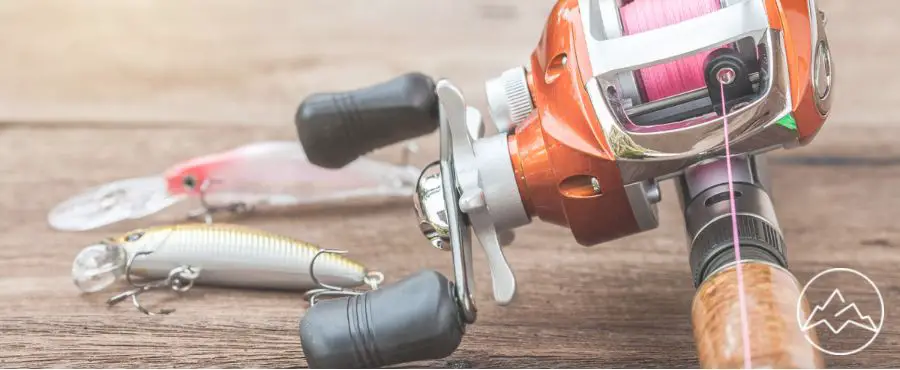Baitcasting reels have been in use since the 17th century and have a long and storied tradition behind them. But there are plenty of fishing enthusiasts who don’t know how to effectively use these kinds of reels, which are a little more effort-intensive than others. This guide will walk you through exactly how to use a baitcaster.
Why use a baitcasting reel?
These complex reels are great tools for experienced anglers. They offer unprecedented control and accuracy when compared to simpler reels that are a little easier to use. Baitcasting reels are durable and reliable over the long term and allow talented anglers to draw in larger and stronger fish than they ever thought possible.
However, baitcasting reels require a lot of practice before it can be used effectively. For this reason, baitcasting reels are not recommended for beginner anglers trying to fish seriously. This guide can help you learn how to use a baitcaster reel in the short term, but keep in mind that you’ll need to practice with this reel for a while yet before you can use it for reel fishing.
How to spool a baitcaster reel
Let’s go through the step-by-step process for effectively spooling your baitcaster reel. To begin with, you’ll need some materials and equipment:
- The fishing line, of course
- Your baitcasting reel
- A cutting tool. These can be specialized fishing pliers or regular household scissors
- A pencil or screwdriver
- A friend, or a reel spooling station since you need an extra hand during this process
Once you’ve gathered the required equipment, you can begin the process below.
Step one
First off, attach your reel to your fishing rod. When this is complete, you’ll want to feed your fishing line through the first pilot of the rod and attach it straight to the reel spool.
Step two
Wrap the fishing line around the spool. You should tie a knot around the mainline to prevent slipping and backtracking. Tie another knot on the tag end, then pull the main line. If done correctly, both knots should tighten down on the spool. Together, both knots technically form an “arbor knot.”
Step three
Now you can start spooling the actual reel. You should probably get a friend to provide an extra hand for this step. Use a pencil or screwdriver and put it through the eye of the fishing line spool. Your extra hand or friends will hold both sides of the spool for stability.
Step four
Reel the line in slowly. As the line wraps around the spool, you should take your opposing index finger and thumb and press on the line. This prevents the line from twisting as it enters the spool and keeps everything neat and tight.
Step five
When the line is about 1/8 of an inch from the top of the spool, you can stop. This provides you with plenty of line for fishing without overfilling the spool and causing trouble for the rod as a whole.
How to cast a baitcaster reel
Now let’s get into the actual technique for casting these reels.
Step one
To begin, make sure that your line has been reeled in until your chosen bait or lure is about 6-12 inches from the tip of your fishing rod. Hold the rod so that your thumb is resting comfortably over the spool itself. Make sure that you’re using the hand that you will use to retrieve your catch.
Step two
Angle your fishing rod so that the reel handles are pointed at the sky. Most of the power and momentum should be in your wrist when you do the casting.
Step three
Now, it’s time to push the spool release button. This unlocks the line from the spool and prevents the spool from touching the handles. This lets you reach longer distances with your casts. Keep your casting armband and make it so that the crook of your elbow is around a right angle. Raise the rod slowly until the tip is nearly vertical.
Step four
Cast! Sweep the rod in a single motion all the way down until it’s about eye level. A good measuring trick to see if your casting motion is correct is to aim for a 10 o’clock position. Remember to lift your thumb off the spool when the bait or lure is propelled to the water.
Step five
When the bait reaches your target, push down on the spool with your thumb to halt the cast. Failing to do this will cause more of your line to continue extending since the spool will still be turning, and you’ll have to straighten your line out before you collect your bait or lure and try again.
FAQs About How to Use a Baitcaster Reel
What is a baitcaster reel and how does it differ from other fishing reels?
How do you spool a baitcaster reel properly?
What is the correct way to adjust the braking system on a baitcaster reel?
What types of lures work best with a baitcaster reel and how do you attach them?
How do you maintain and clean a baitcaster reel to ensure its longevity and performance?
Conclusion
While using a baitcasting reel takes some effort, the benefits are great. Go out there and get those epic, long-range casts in and have a great time!



